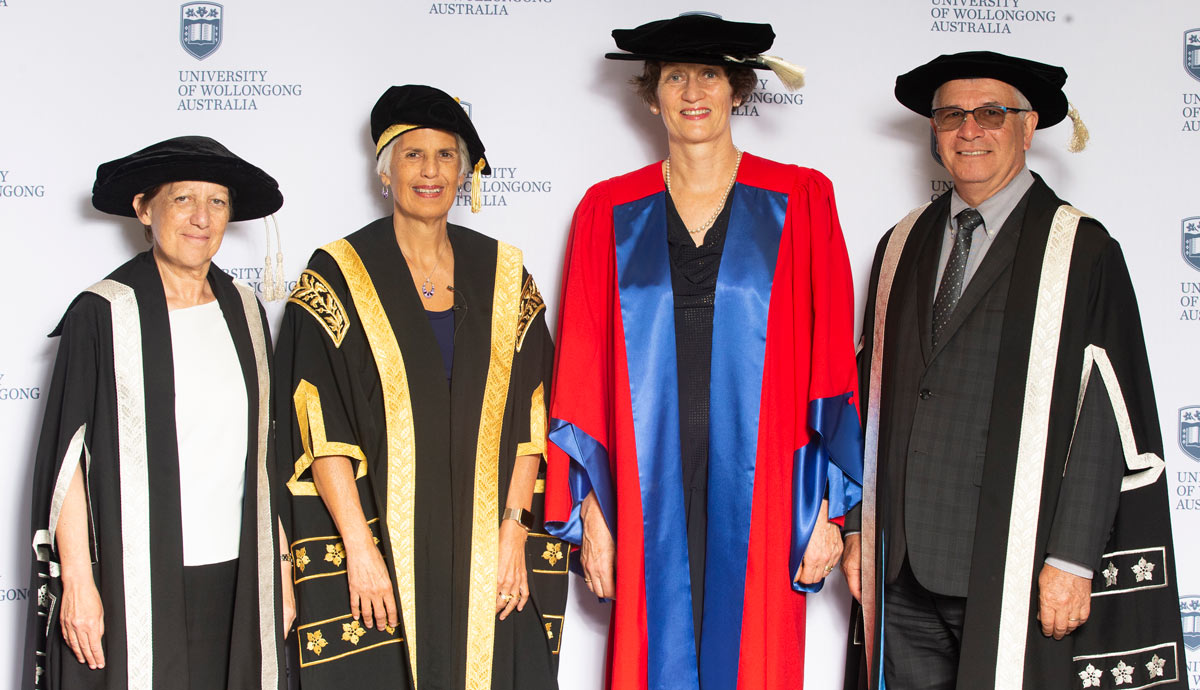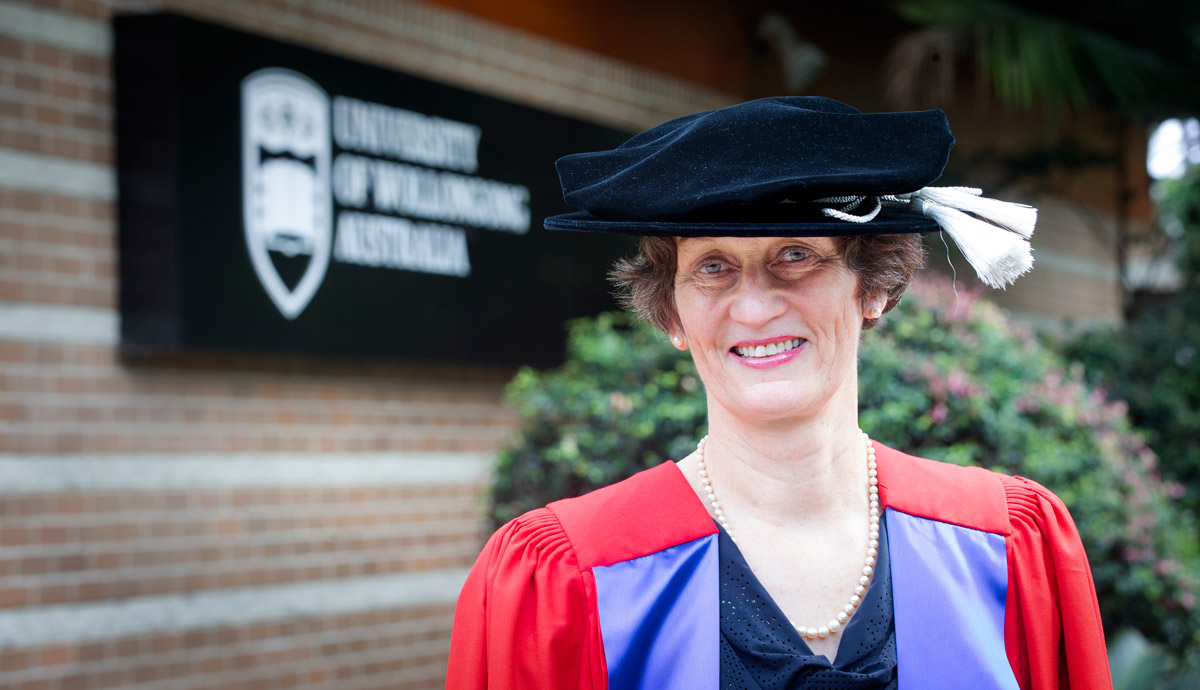December 14, 2018
From sandcastles to soil mechanics: how a curious child became a celebrated engineer
Honorary doctorate recipient Professor Sarah Springman is a world-class academic, an elite athlete, and a true inspiration
Professor Sarah Springman CBE has always been intrigued by how things work. That was how she came to engineering. From an early age, she would build sandcastles for hours during family holidays to the Irish coastline, relishing the joy of building and creating.
It is a feeling that has not left her, more than three decades since she entered the field of engineering.
“I am absolutely fascinated by how engineering can be used to create opportunities and to make things work. How do we guarantee the simplest conveniences that everyone takes for granted today: infrastructure and buildings for every purpose, how energy is provided as we power up our computers and turn on our lights, how clean water comes out of a tap, how transportation has evolved. All of that is because of engineers. They have made our lives so much more comfortable and safer today,” said Professor Springman, a chartered civil engineer.
“When I was three, I loved building sandcastles on the beach. They weren’t very good at the time, but I was clearly fascinated by how to construct things. By the time I was 10 and 11, I would create my own dams across rock streams, using sand, sticks and stones to create a reservoir, to provide safe overflows to try to keep the dams stable and prevent them from being eroded.”
That curious child is now an engineer at the top of her field. Today (Friday 14 December), Professor Springman received a Doctor of Science (Honoris Causa) from the University of Wollongong (UOW) for her significant contribution to engineering and higher education, at an international level.
Professor Springman, who is now Rector at ETH Zurich, a technical university in Switzerland, said it was “a great honour” to be acknowledged by the University. She has formed a strong relationship with UOW throughout the course of her career, often closely collaborating with Distinguished Professor Buddhima Indraratna and his team from the Centre for Geomechanics and Railway Engineering.
Educated at the University of Cambridge, Professor Springman studied soil mechanics and geotechnical engineering, graduating in 1978 with a Bachelor of Arts in Engineering Sciences. Over the next decade, she achieved her Master of Philosophy in Soil Mechanics, followed by her PhD in the same subject, graduating in 1989. In between her two periods in Cambridge, her work as a consulting engineer took her to the other side of the world, for projects in Fiji and Australia.
Now, she is one of the world’s leading experts in geotechnical engineering. Her research has looked at how and when landslides are triggered, and the impact of climate change, so that mitigation measures can be put in to place to save lives and infrastructure. Her contribution has led to the better understanding of the movement of glacier-like forms and rock avalanches on Mars and Earth.
However, Professor Springman’s talents are not confined to academia. While she continued her studies at Cambridge, she was also pursuing her goals as an elite athlete.
Between 1984 and 1993, Professor Springman represented Great Britain as a triathlete, winning 21 ETU European Champion medals in triathlon and duathlon. She competed in the 1990 Commonwealth Games, in New Zealand, and for a time, she even dabbled in rowing: she still enjoys regular morning outings on Lake Zurich.
Her passion for sport ran deep and did not end with competing. Professor Springman played an instrumental role in raising the profile of triathlon in the United Kingdom and lobbying, successfully, for it to be included in the Olympic, Commonwealth, Paralympic and World Master Games.
Pursing her dreams in engineering and sport, at the same time, no less, was no easy feat, but it helped crystallise the importance of working hard and focusing on what can be achieved in the time you have.
“You have to set goals and priorities. You have to decide how you’re going to manage your time. You give space at different times of the year to your competing interests,” Professor Springman said of balancing her intense schedule.
“When I became a Professor at ETH, I moved to Zurich and could not speak much German at the time. It felt like I was jumping off a cliff and I was just hoping that a parachute would open up before I landed. Fortunately, since I am still at ETH today, you can see that I survived. When you’ve been on the starting line in an ironman, competing with thousands of others who are trying to swim to the same buoy, and you survive, that helps to give you confidence. It’s helps you to become robust, and resilient, and know you can tough it out when you need to.”

Back in the engineering field, Professor Springman is passionate about encouraging young women to see themselves in the STEM field. It is a cause she advocates for in her role as Rector of ETH Zurich - she is the second women to hold that position since the University was established in 1855 - and she feels the tide is slowly beginning to turn.
Diversity is essential to creating a dynamic environment in engineering, but the push must begin in a child’s early years.
“You have to start young, before puberty. Before society tells the child that maybe engineering is not a great career for a young girl,” she said.
“Marvellous opportunities are provided by ETH for kids aged 8 to 10. For example, they can join a course to learn to program a computer. They are quite competent after 10 two-hour sessions, and they have a lot of fun too. Our professors have educated 12,000 children so far over the past decade. If the girls develop a passion for it, they will keep going.
“When I began at ETH we had about 5-8 per cent of women in our civil engineering diploma: now it is between 20 and 25 per cent and we have a critical mass that has stimulated this growth. Young girls are beginning to realise that this is a fascinating career when they don’t have to do the same thing, day after day.”
She points to Switzerland, her home of 22 years, as an example of the fundamental importance of viewing education as a force for change. Creating a new generation of leaders, who will be flexible, innovative, and an advocate for others, demands time and resources, but it is to the benefit of the whole society.
“In Switzerland, we don’t have minerals and precious gems like you do in Australia, so investing in education is absolutely essential for the future,” she said.
“I like to feel that I have been able to create opportunities for other people to achieve their dreams and be successful. That stretches across academia and sport.”
“The educational requirements are different now to how it was in the past. We move away from rote learning and more towards problem solving from a solid mathematical, computational and technical basis.
“Graduates will be working for the next 50 years, so you need to give them the tools to be able to evolve their skills as the demands on them change.
“Our students are the future.”
In her chosen field, and her role as Rector at ETH Zurich, Professor Springman is doing what she can to effect change, to create and build a viable future. Just like she imagined as a child.
“I love the link between engineers and ingenuity. If you think back to the Victorian era, engineers made much more of an impact on the length and quality of life than the doctors at the time,” she said, with a laugh.
‘I feel very passionate about having the opportunity to make life better for others.”
